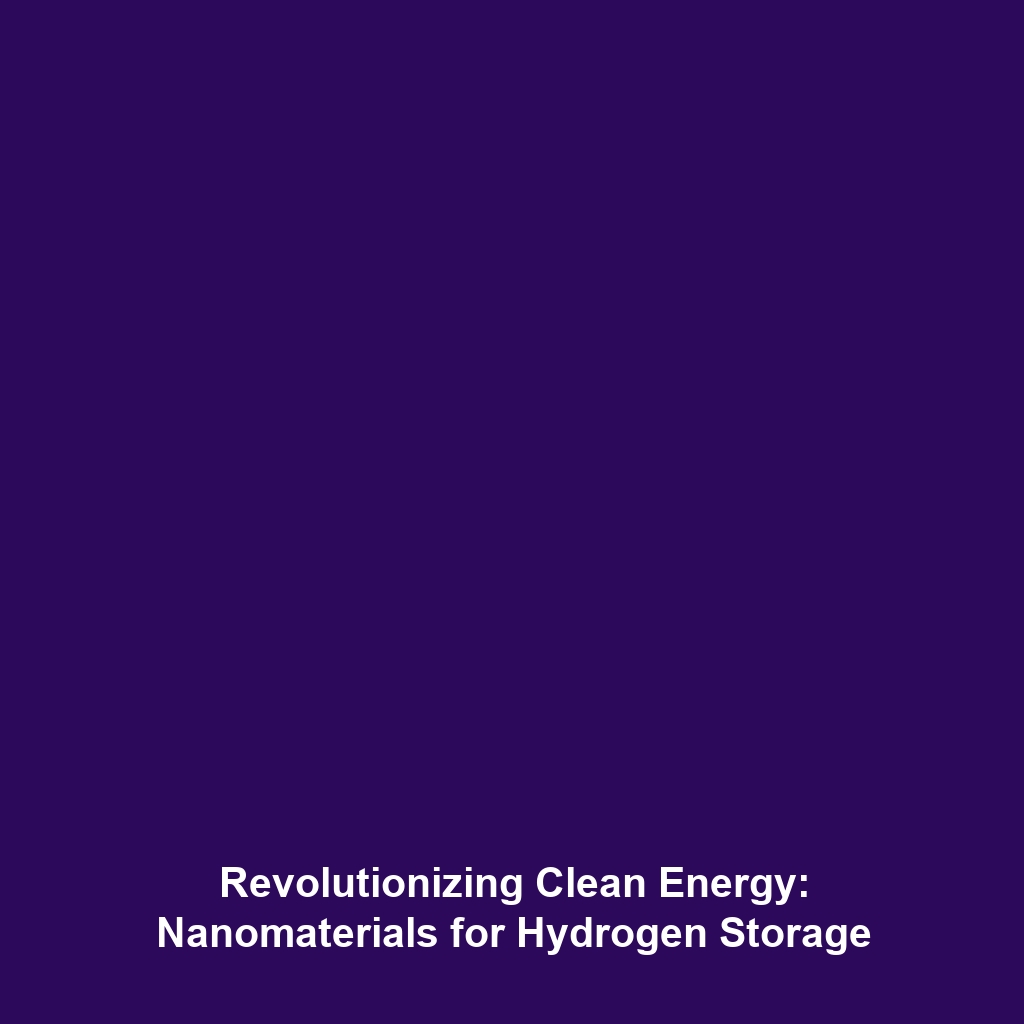Nanomaterials Help Store and Transport Hydrogen for Clean Energy Applications
Introduction
Nanomaterials are poised to transform the landscape of clean energy, playing a critical role in the safe storage and efficient transport of hydrogen. With the increasing demand for sustainable energy sources, the significance of nanomaterials in hydrogen storage cannot be overstated. These materials enhance the efficiency, safety, and capacity of hydrogen fuels, making them a viable alternative to fossil fuels. Understanding how nanomaterials contribute to hydrogen applications is essential for advancing technologies in energy storage and transfer.
Key Concepts
The role of nanomaterials in hydrogen storage and transport encompasses various scientific principles, including:
- Nano-architecture: The unique properties of nanomaterials arise from their small size, leading to higher reactivity and surface area.
- Hydrogen adsorption: Nanomaterials facilitate the absorption of hydrogen molecules, enhancing their storage capacity.
- Transport efficiency: By utilizing nanostructures, hydrogen transport can be optimized through reduced energy losses.
Through these key concepts, nanomaterials exemplify the application of Advanced Nanomaterials in converting hydrogen into a practical energy source.
Applications and Real-World Uses
Nanomaterials play a pivotal role in various applications related to hydrogen storage and transport:
- Fuel cells: Nanomaterials are used to improve performance in hydrogen fuel cells, which convert hydrogen into electricity.
- Portable hydrogen storage: Advanced nanomaterials offer high-density hydrogen storage solutions for portable devices and vehicles.
- Hydrogen pipelines: The use of nanomaterials enhances the safety and efficiency of pipelines, reducing the risk of leaks.
These examples demonstrate how nanomaterials are used in hydrogen storage and transport, enhancing the viability of hydrogen as a clean energy source.
Current Challenges
Despite their potential, several challenges hinder the full realization of nanomaterials in hydrogen applications:
- Cost of production: High costs associated with synthesizing advanced nanomaterials can limit scalability.
- Durability issues: Some nanomaterials may degrade over time, impacting their long-term effectiveness.
- Safety concerns: There are ongoing debates regarding the environmental impact and safety of nanomaterials.
These challenges of nanomaterials in hydrogen applications highlight the need for continued research and innovation.
Future Research and Innovations
Innovations in the field of nanomaterials are expected to advance hydrogen storage and transport technology significantly:
- Self-healing materials: Research is underway to develop nanomaterials that can self-repair, enhancing long-term reliability.
- Hybrid nanomaterials: Combining different types of nanomaterials may result in enhanced performance for hydrogen systems.
- Novel nanocarriers: Developing nanocarriers allows for better delivery mechanisms for hydrogen storage and transport.
These next-gen technologies aim to solve existing issues and pave the way for a more sustainable future.
Conclusion
In summary, the integration of nanomaterials into hydrogen storage and transport systems represents a significant advancement in clean energy technology. Their ability to enhance efficiency and safety aligns perfectly with the goals of sustainable energy development. As research progresses, further breakthroughs in Advanced Nanomaterials will likely position nanomaterials at the forefront of hydrogen energy solutions. For more information on emerging technologies in this domain, explore our articles on Hydrogen Fuel Cells and Sustainable Energy Innovations.
